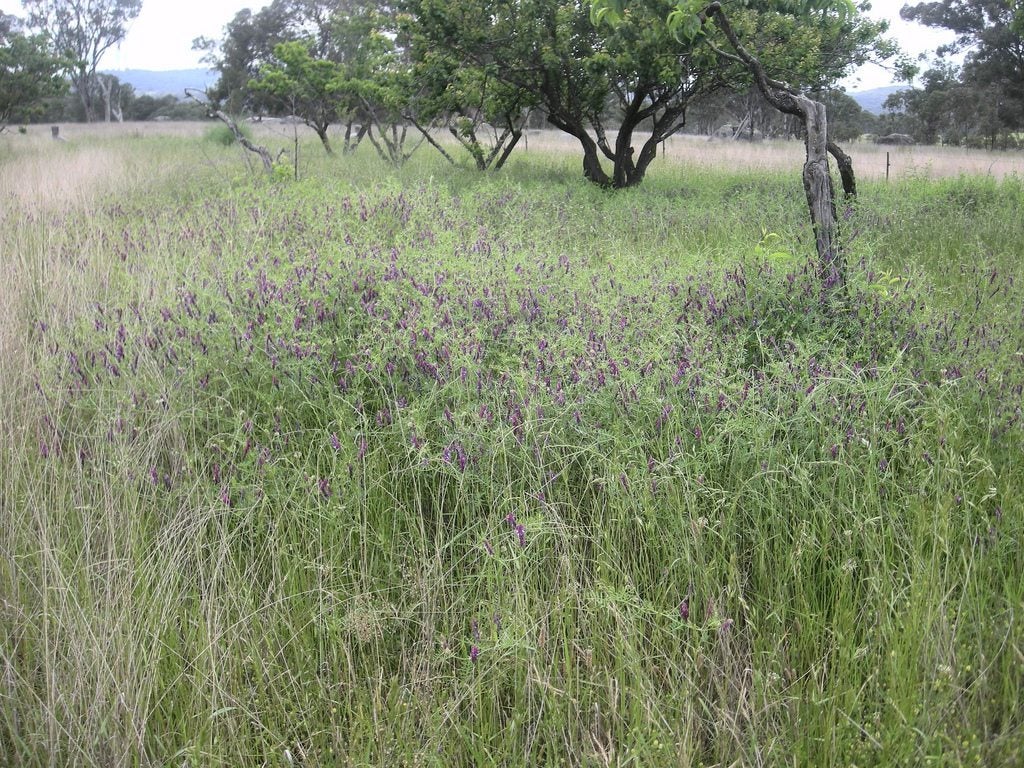What Is Woollypod Vetch – Learn About Growing Woollypod Vetch


What is woollypod vetch? Woollypod vetch plants (Vicia villosa ssp. dasycarpa) are cool-season, annual legumes. They have compound leaves and pinkish flowers on long clusters. This plant is usually grown as a woollypod vetch cover crop. For more information about woollypod vetch plants and tips on how to grow woollypod vetch, read on.
What is Woollypod Vetch?
If you know anything about the vetch family of plants, woollypod vetch looks quite similar to other annual and perennial vetches. It’s an annual and a cool-season crop. Woollypod vetch plants are low-lying plants with stems that trail up to a yard. A climber, it will go up any support at all, even grass or grain stems. Most people growing woollypod vetch plants do so to use it as a legume cover crop. Woollypod vetch cover crops fix atmospheric nitrogen. This helps in field crop rotation. It is also beneficial in orchards, vineyards, and cotton production. Another reason for growing woollypod vetch plants is to suppress weeds. It has been used successfully to suppress invasive weeds like star thistle and medusahead, an unpalatable grass. This works well since woollypod vetch can be seeded on untilled ground.
How to Grow Woollypod Vetch
If you want to know how to grow woollypod vetch, it is best to work the soil a bit before planting the seeds. Although the seeds may grow if scattered, their chances are greater if you broadcast lightly, or else drill to a depth of 0.5 to 1 inch (1.25 – 2.5 cm). Unless you have grown vetch in the field recently, you’ll need to inoculate the seeds with a “pea/vetch” type rhizobia inoculant. However, you won’t need to irrigate the crop at all in winter. Growing woollypod vetch will provide your soil with dependable, abundant nitrogen and organic matter. Vetch’s strong root system develops nodules early, enough to provide the plant with its own nitrogen and also accumulates significant amounts for the crops that will follow. The woollypod vetch cover crop keeps the weeds down and its seeds make the wild birds in the area happy. It also attracts pollinators and beneficial insects like minute pirate bugs and lady beetles.
Sign up for the Gardening Know How newsletter today and receive a free copy of our e-book "How to Grow Delicious Tomatoes".

Teo Spengler is a master gardener and a docent at the San Francisco Botanical Garden, where she hosts public tours. She has studied horticulture and written about nature, trees, plants, and gardening for more than two decades, following a career as an attorney and legal writer. Her extended family includes some 30 houseplants and hundreds of outdoor plants, including 250 trees, which are her main passion. Spengler currently splits her life between San Francisco and the French Basque Country, though she was raised in Alaska, giving her experience of gardening in a range of climates.